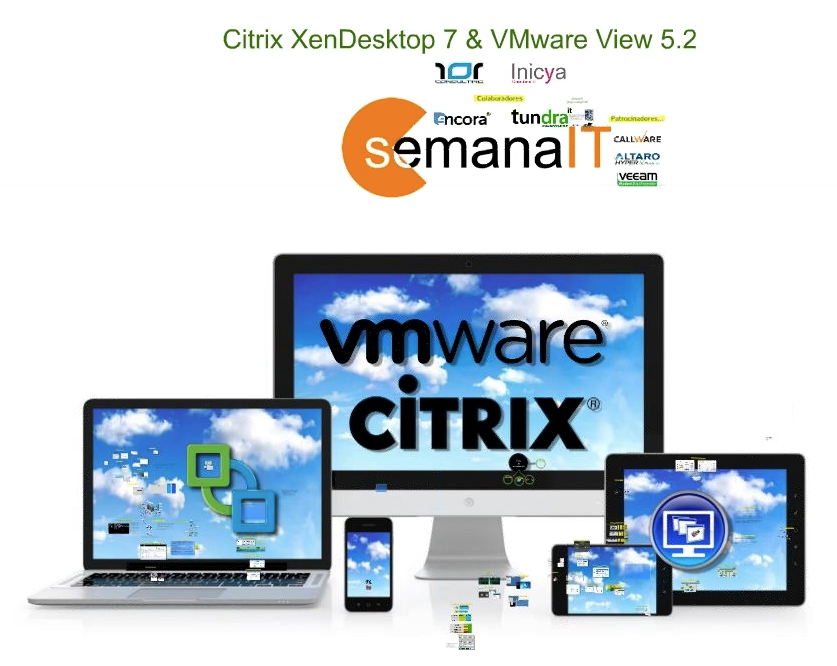VDI Differences Talk with Citrix XenDesktop 7 and VMware View 5.2
Hola a todos! Ayer dimos una charla en la SemanaIT sobre los entornos VDI que tenemos actualmente, un webinar donde vimos lo que tiene cada fabricante en sus versiones actuales, a little comparing one's shortcomings against the advantages of the competitor and well, un evento que creo puede ser interesante a quien esté por implementar una infraestructura de este tipo. Os dejo por un lado la grabación por si la queréis seguir, el fichero de la presentación en sí para verla offline y un PDF por si os es más cómodo. Cualquier cosa que necesitéis sabéis donde estoy, Youtube – Webinar de Diferencias VDI con Citrix y VMware Presentación – Webinar de Diferencias VDI con Citrix y VMware PDF – Webinar de Diferencias VDI con Citrix y VMware











































